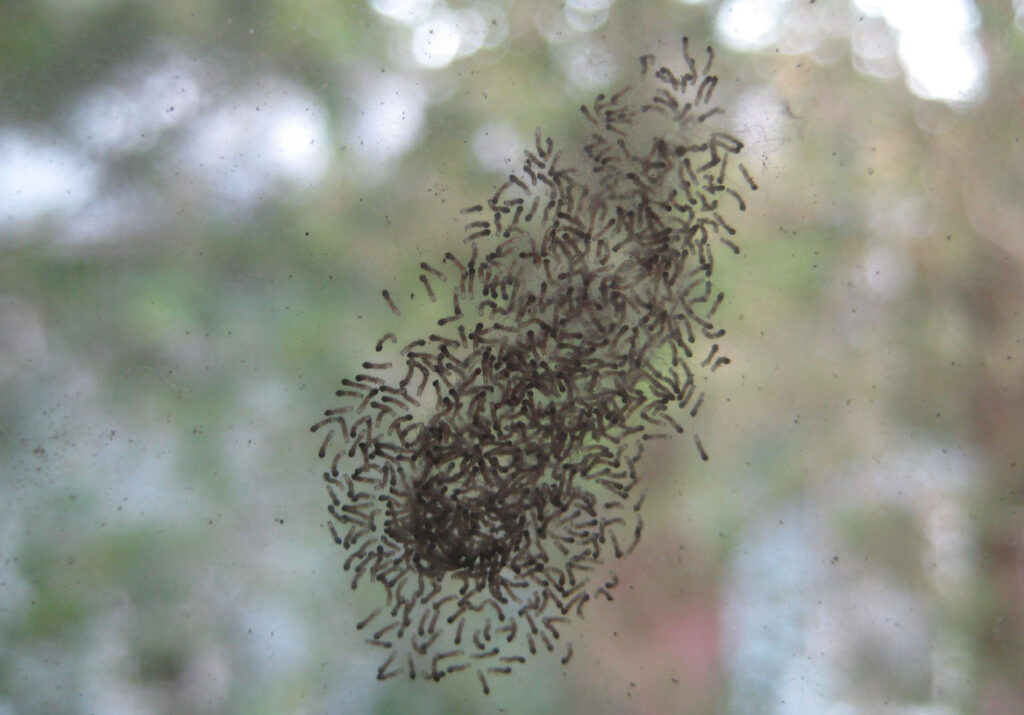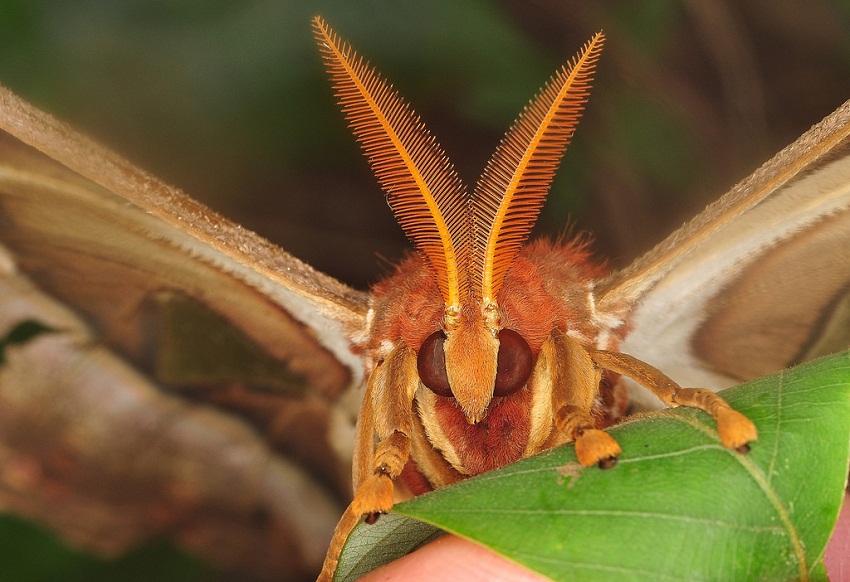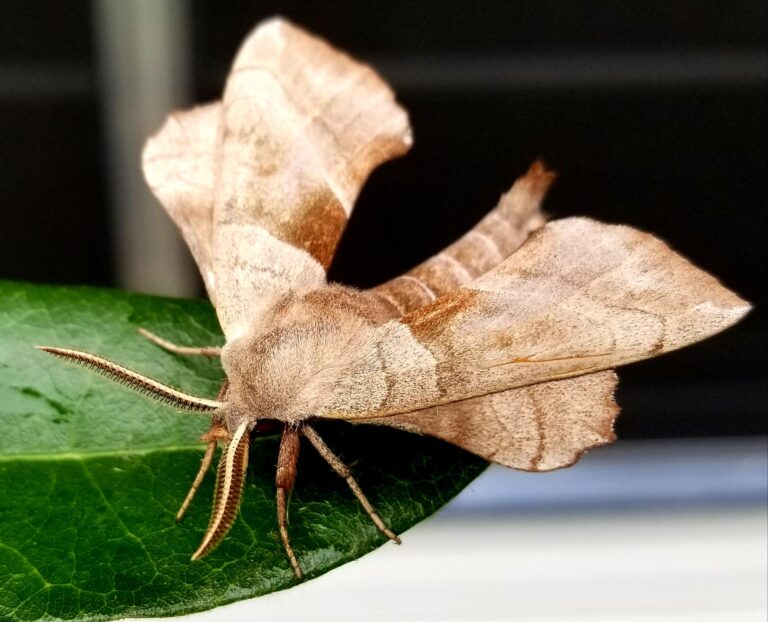Moths outside your house can be attracted for various reasons, including outdoor lighting, plant life, climate, food sources, breeding grounds, and nearby habitats. To reduce their presence, adjust outdoor lighting, maintain vegetation, seal entry points, keep the area clean, and consider using moth repellents.
However, remember that complete elimination may not be achievable or necessary as moths are a natural part of the ecosystem.
How does outdoor lighting impact moth presence?
Moths are nocturnal insects that have evolved to navigate using natural light sources, such as the moon and stars. They use these sources for orientation and to maintain their flight path.
Furthermore, artificial lights, like outdoor lamps and porch lights, can confuse moths. They are often drawn towards these lights, believing them to be natural light sources. This behavior is called phototaxis.
Impact of outdoor lighting
Outdoor lighting can significantly increase moth activity around your house, especially at night. Moths may gather around the lights in large numbers.
In addition, this congregation near lights can disrupt their natural behavior, affect their feeding and mating patterns, and even lead to collisions with structures or other objects.
Over time, excessive outdoor lighting can disturb local ecosystems and wildlife by altering the distribution of moth prey for nocturnal predators like bats and owls.
Vegetation and Plant Life

Moths are often attracted to specific types of plants and flowers that emit strong scents or have bright, white or pale-colored petals during the evening. These features make it easier for moths to locate nectar sources.
Examples of plants that attract moths include evening primroses, moonflowers, and certain species of jasmine.
The role of gardens or vegetation near the house
Gardens and vegetated areas near your house can create a favorable habitat for moths by providing food sources and shelter.
However, if you have a garden with moth-attracting plants, it’s likely to contribute to a higher number of moths in your immediate vicinity.
Climate and Season
Moth activity is influenced by climate and seasons. Warmer and more humid climates tend to support higher moth populations.
Moths are more active during the spring and summer months when temperatures are favorable for their development and reproduction.
Seasonal variations in moth populations
Different moth species have specific seasonal emergence patterns. Some moths are more active in the early spring, while others peak in mid-summer or late summer.
Understanding these seasonal variations is important in predicting when you might see more moths around your house.
Food Sources
Types of food sources that attract moths:
Moths primarily feed on liquids, and their diet consists of nectar from flowers, fruit juices, tree sap, and even liquids from decaying matter.
Rotting fruit, tree sap, and overripe flowers are common food sources that can attract moths.
The role of decaying organic matter, pollen, and nectar:
Moths are drawn to decaying organic matter because it can serve as a source of nutrients and moisture.
Additionally, the presence of pollen and nectar can be attractive to moths as they provide sustenance for their adult stage.
Breeding Grounds
Moths often lay their eggs in sheltered and dark places, such as crevices in tree bark, the undersides of leaves, or the eaves of buildings.
In addition, these hidden locations protect the eggs from predators and environmental stressors.
The significance of suitable breeding environments:
Having suitable breeding environments in close proximity to your house, such as nearby trees or foliage, can lead to a higher local population of moths.
Nearby Habitats
Moth populations can be influenced by the proximity of your house to natural habitats like forests, wetlands, or fields.
Houses near such habitats may experience higher moth activity as moths can travel from these natural areas.
Woods, wetlands, and their attraction to moths
Woods and wetlands provide moths with abundant natural resources, including shelter, food, and breeding sites.
However, if your house is situated near these habitats, you may notice an increased presence of moths, especially during their active seasons.
How to control and reduce moth populations around your house?
By implementing these strategies, you can take a proactive approach to manage moth populations around your house effectively.
Adjusting Outdoor Lighting
Tips for using less attractive outdoor lighting: Consider using yellow or warm-colored outdoor light bulbs instead of bright white or cool-colored ones. Moths are less attracted to these warmer hues.
Install motion sensor lights that only turn on when needed, reducing constant illumination.
Shield or direct outdoor lights downward to minimize light spillage into the night sky, which can help both reduce energy consumption and minimize moth attraction.
Use timers or dimmers to control the intensity and duration of outdoor lighting, ensuring it’s only on when necessary.
The importance of turning off lights when not needed: Moths are most active during the night, so keeping outdoor lights on unnecessarily can attract and disorient them.
Turning off outdoor lights when they are not required not only conserves energy but also helps maintain a natural environment for moths and other nocturnal creatures.
Vegetation Management
Strategies for trimming and maintaining plants that attract moths: Prune or trim plants that attract moths to reduce their appeal. This can involve removing dead or overgrown branches and flowers.
Consider planting moth-repellent species or using moth-resistant cultivars in your garden.
Regularly inspect your garden for signs of pest infestations, which can attract moths looking for food sources.
Reducing moth-attracting vegetation:
If you’re concerned about a high moth population, you may choose to reduce the number of moth-attracting plants in your garden.
Furthermore, replace them with vegetation that is less appealing to moths or focus on planting during seasons when moths are less active.
House Maintenance
Importance of sealing entry points to prevent moths from entering indoors:
Moths can enter your house through small cracks, gaps, or openings around windows, doors, and vents.
Regularly inspect and seal these entry points with weatherstripping or caulk to prevent moths and other insects from gaining access to your living spaces.
Keeping the outdoor area clean and free from decaying matter:
Remove decaying organic matter such as fallen leaves, dead plants, and compost piles near your house. These materials can serve as food sources and breeding grounds for moths.
Ensure that outdoor garbage cans are tightly sealed to prevent moth infestations in trash.
Moth Repellents and Traps

Moth repellents come in various forms, including sprays, sachets, and cedarwood products. These can be placed in closets, drawers, and other moth-prone areas to deter them.
Moth traps, such as pheromone traps, can be used to capture and remove moths from indoor spaces.
How to effectively employ these methods
Follow the manufacturer’s instructions when using moth repellents or traps. Proper placement and maintenance are crucial for their effectiveness.
For pheromone traps, it’s important to place them in areas where moth activity is high,
typically in closets or near stored clothing.
Keep in mind that while repellents and traps can help manage moth populations indoors, they may have limited impact on outdoor moth populations.
FAQ’s
Why are moths around my house?
Moths are attracted to light sources, vegetation, climate, and food sources, which can all contribute to their presence around your house.
How do I get rid of moths everywhere?
To reduce moth populations, you can adjust outdoor lighting, manage vegetation, seal entry points, keep your outdoor area clean, and use moth repellents or traps as needed.
What smells do moths hate?
Moths are typically repelled by strong scents like cedar, lavender, mint, and cloves.
Are moths bad to have around?
Moths themselves are not inherently harmful, but their larvae can damage clothing, fabrics, and stored food. Some species may also be considered pests in agriculture.
What do moths symbolize?
Moths are often symbolic of transformation, faith, vulnerability, and the attraction to light. In various cultures, they can have different symbolic meanings.
What does moth damage look like?
Moth damage on clothing or fabrics often appears as irregular holes or chewed areas. In stored food, it can manifest as webbing or silk-like threads.
Will a moth come near me when I sleep?
While moths are attracted to light sources, they are not typically attracted to humans when sleeping. Their focus is usually on outdoor lights or natural light sources.
Final Words
In conclusion, managing moth populations around your house involves understanding the factors that attract them and taking practical steps to minimize their presence. You can achieve this by adjusting outdoor lighting to be less attractive to moths, maintaining vegetation strategically, sealing entry points to prevent indoor infestations, and using repellents or traps as needed.
Remember, while it’s important to manage moth populations, complete elimination may not be necessary or practical, as moths are a part of the natural ecosystem.
By following these simple steps, you can create a more comfortable living environment while coexisting harmoniously with these fascinating insects.

